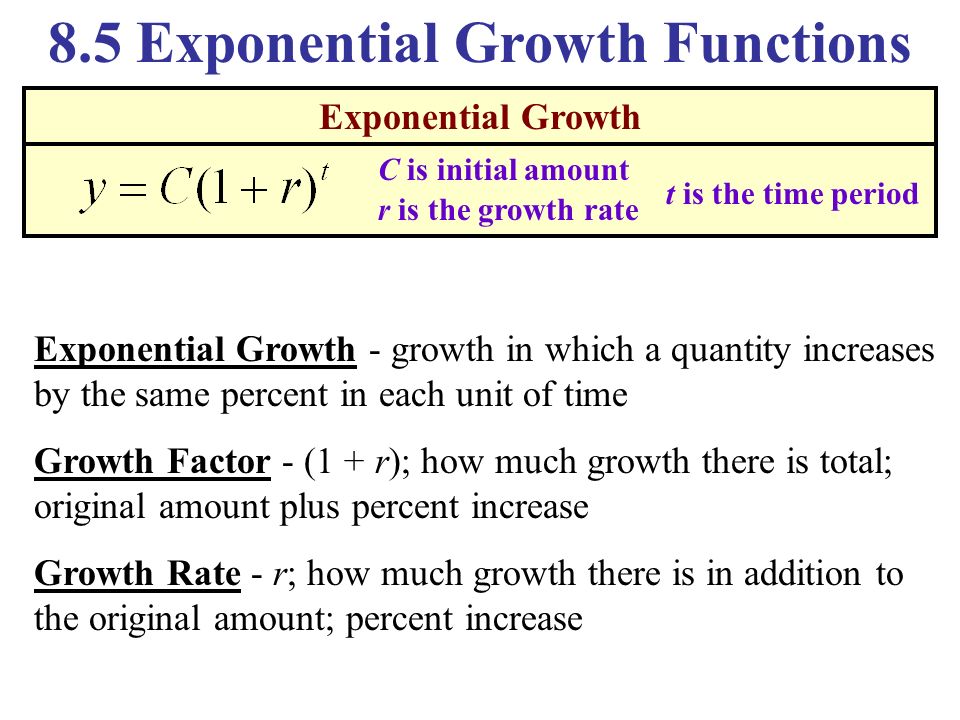According to Population the Bureau, the world population in 2000 was 6.1 billion and increasing at an annual rate of 1.4%. What would the world population be in 2020? What is the exponential function to predict the actual population?
1 Answer
Explanation:
 http://slideplayer.com/slide/8208527/
http://slideplayer.com/slide/8208527/
Using this chart, we can model your equation here. First, divide 1.4% by 100 to get the growth rate.
where p is the population as a function of time. The initial amount is 6.1 billion, and t is the time in years since 2000. This can be simplified inside the parentheses.
Now that we have the equation, let's find the expected population in 2020. since 2020 - 2000 is 20, we will plug in 20 for t in the equation, then simplify.
since you can't have 0.31 of a person, let's round down. This leaves us at
I am not sure if you were asking about what the function would be based on the givens or if you wanted a more improved function, but a way to improve the function is to start in a more recent year, say 2014, and create a model based on that, with an adjusted initial population and a newer rate. But if you were asking about the original equation, it was written above.

